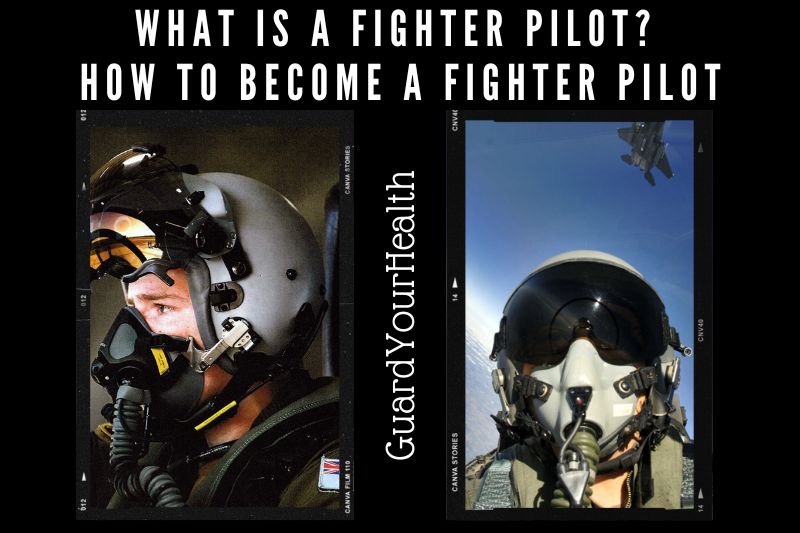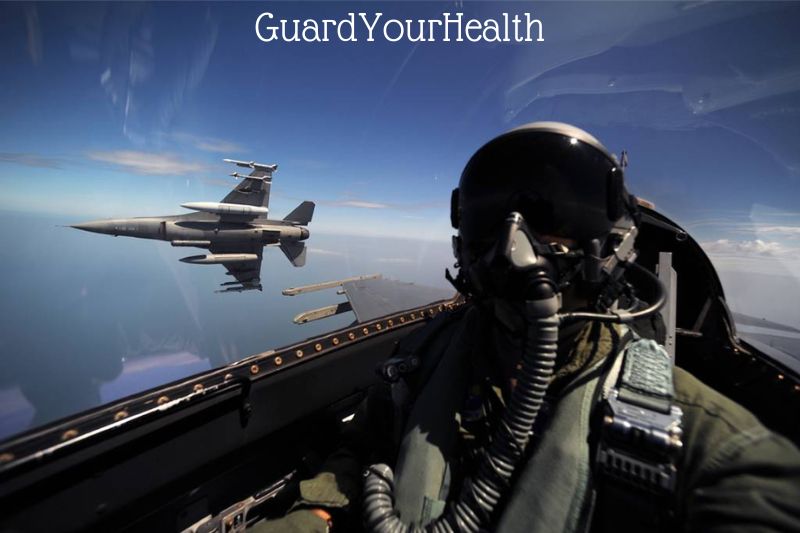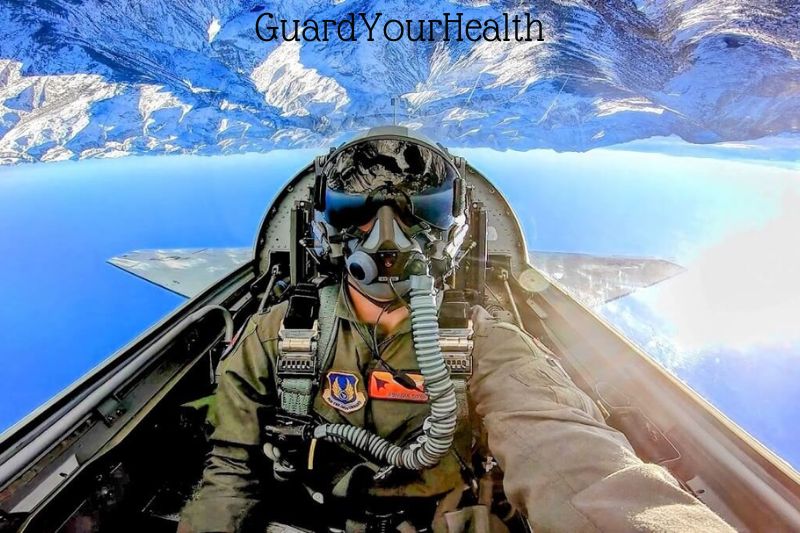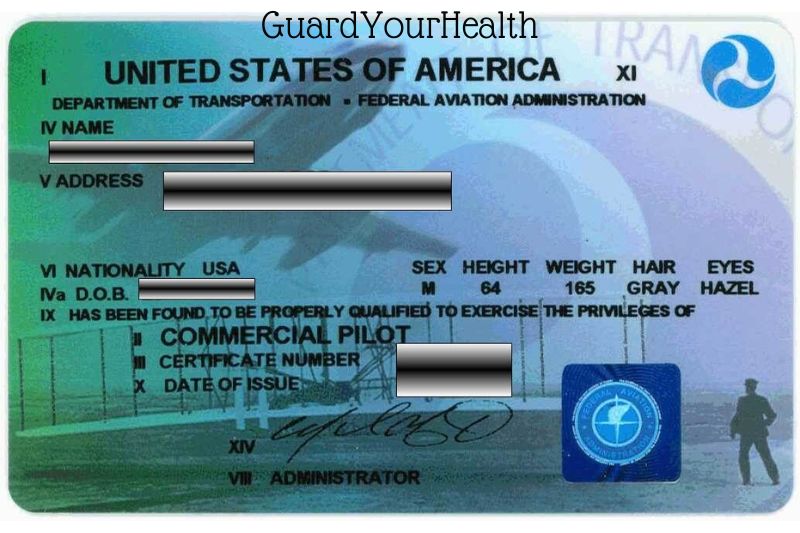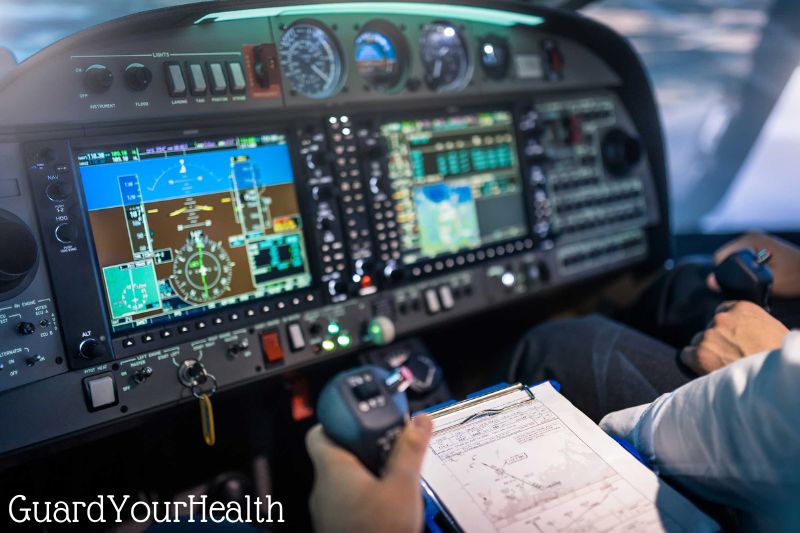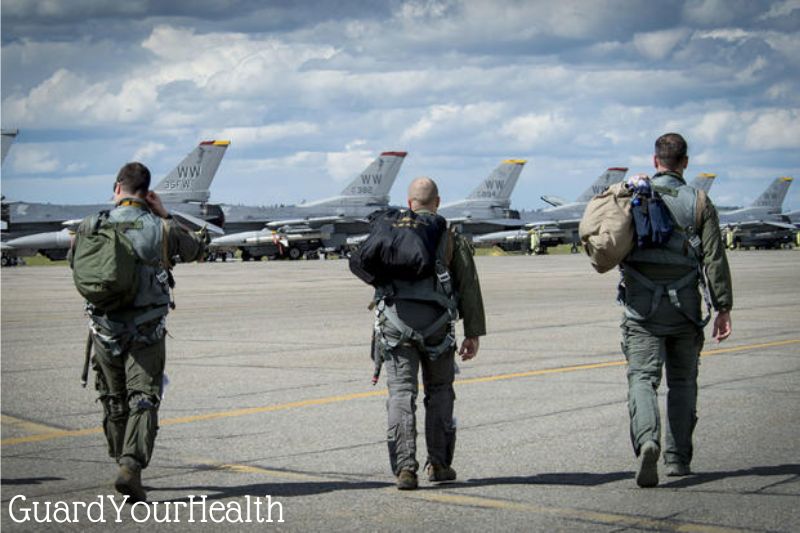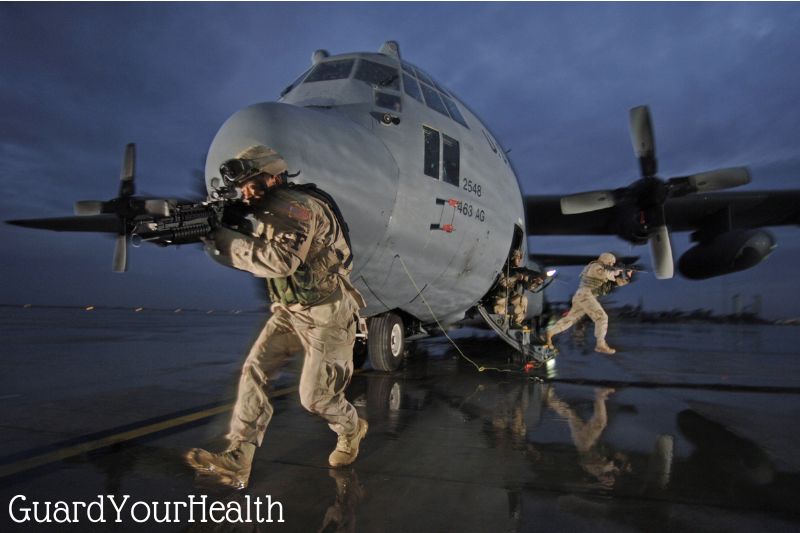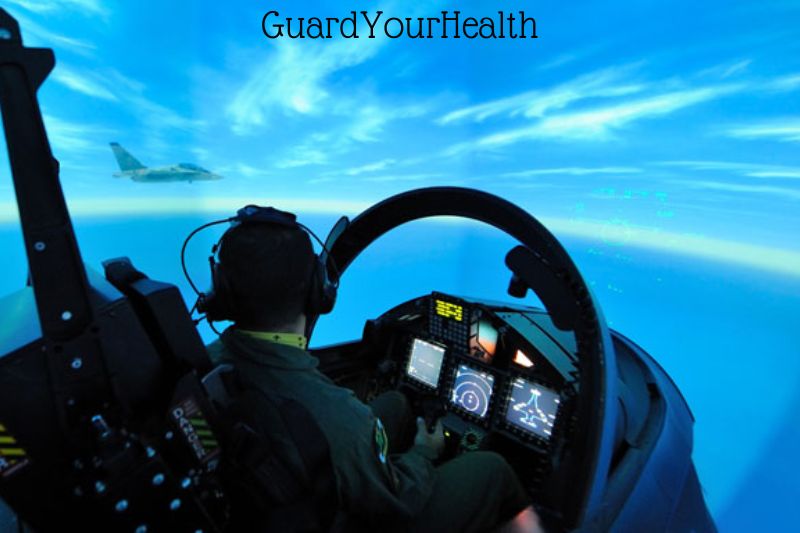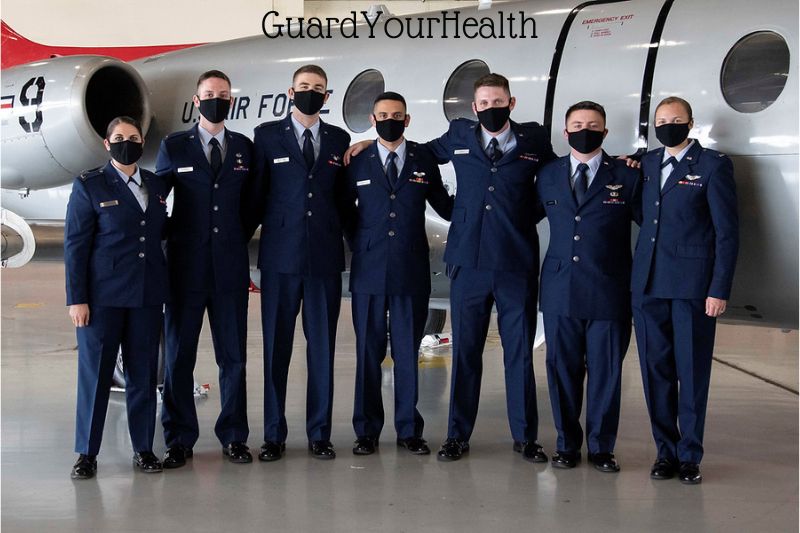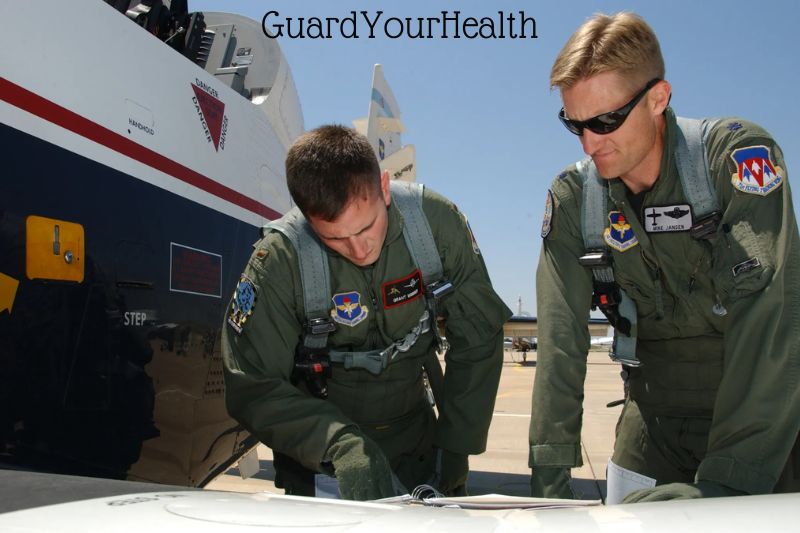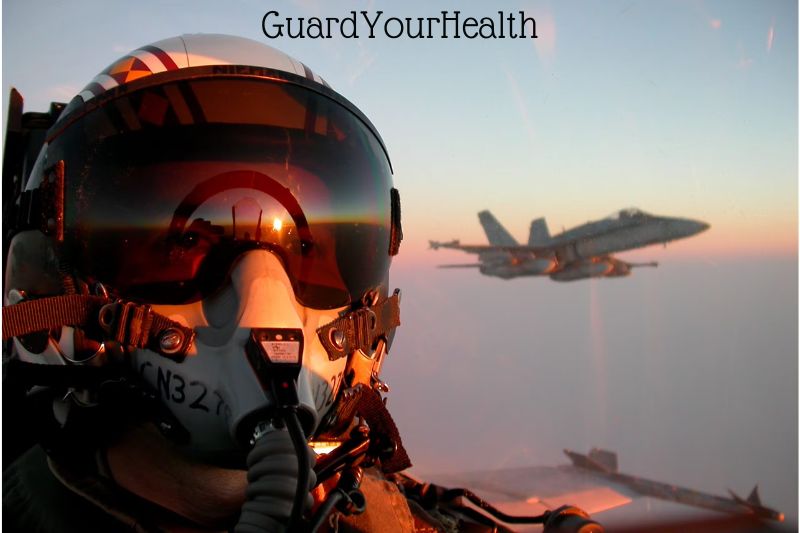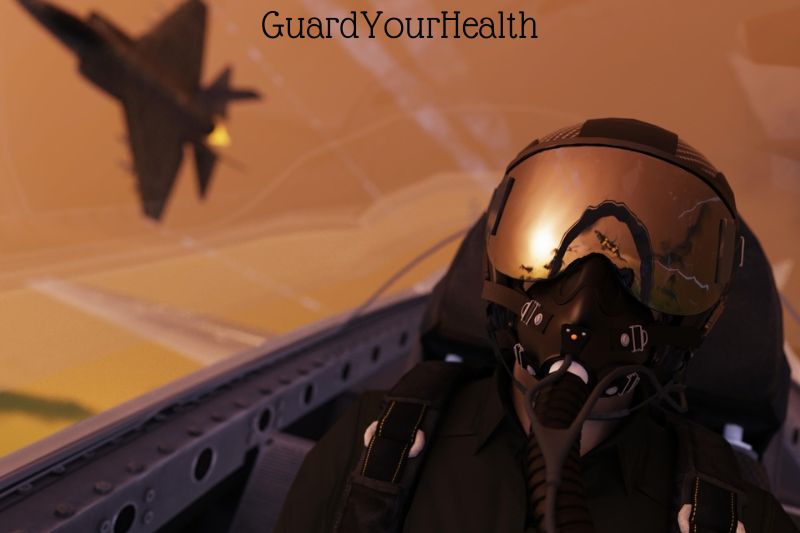Fighter pilots are highly trained military personnel who operate fighter aircraft in combat situations. They are typically responsible for carrying out missions such as air-to-air combat, ground attack, and escort duty. Fighter pilots must possess a high degree of skill and stamina and be able to make quick decisions in order to succeed in their roles.
In this blog post, GuardYourHealth will guide you step by step on how to become a fighter pilot. Let’s dive in.
What Is A Fighter Pilot?
By the time you finish reading this, you probably already know that a pilot who flies military fighter jets is known as a “fighter pilot.” A fighter pilot and an Air Force pilot are not the same, despite many people’s misconceptions. It is possible to be an Air Force pilot yet never take off in a fighter plane. Additionally, you can be a fighter pilot even if you are not in the Air Force.
Actually, all armed branches—not just the Air Force—have their own squadron of fighter pilots. You might even be surprised by how many pilots there are in each branch, which includes the Marines, Navy, Army, and Coast Guard.
Each service has its own fighter jets and fighter pilots. To make matters worse, Air Force pilots may be assigned to operate a variety of aircraft types without ever getting to pilot a fighter jet.
You could follow all the instructions in the letter and still not be given a chance to become a fighter pilot and pilot the aircraft of your dreams. These aircraft are among the fastest and most cutting-edge in existence.
Therefore, you should take very seriously the opportunity to pilot fighter jets. Although it’s difficult, if you succeed, you might be able to obtain some of the best benefits available in the aviation sector.
Undoubtedly, pursuing a profession as a commercial pilot is a fantastic course to take in life. It will probably give you access to a variety of bonuses and perks. But the train to be a fighter pilot. You’ll be able to soar to new heights and fly at supersonic speeds while enjoying the advantages of a government or military profession that will prepare you for retirement.
How To Become A Fighter Pilot In The Air Force
Despite all of this, as you’ll soon find, there isn’t actually a surefire way to become a fighter pilot. However, we can provide you with comprehensive guidance on how to give yourself the best chance for success.
Step 1: Complete Independent Study and Meet Minimum Standards
Although the topics I’m going to cover here aren’t strictly necessary to become a fighter pilot, they will greatly enhance the experience, therefore, I’m going to refer to them as Step 0. I strongly advise completing as much of this as possible because doing so will increase the odds and improve your chances of success.
Maintain A Healthy Physical State.
If you’re considering a career as a fighter pilot, your first priority should be to get and keep in condition. While serving in the military, you will not only need to pass physical fitness tests but piloting a fighter plane is far more physically demanding than you might imagine. It’s not quite the same as flying commercial aircraft, and you’ll have trouble in the cockpit if you’re out of shape.
With fighter jets, especially if you ever come into contact with an adversary, you’ll be pulling Gs, executing various aerial tricks, and doing your best to survive.
Additionally, the helmet and built-in heads-up display are heavier than you might expect. Therefore, being in good physical form will be quite helpful for you when you are flying a fighter.
Obtain a Private Pilot License (PPL)
Although obtaining your Private Pilot License (PPL) might seem like a strange step toward becoming a combat pilot, it could provide you with a significant advantage over other applicants.
The rivalry to become a fighter pilot is fierce versus everyone else in your class, and I’ll talk more about this later. Since there are only a small number of fighter pilot positions available, every edge will be helpful.
I advise earning your PPL since it will offer you a significant advantage over the majority of applicants who have little (if any) solo experience at the controls. Additionally, you can start working on this early in life because there is no minimum age requirement to fly an airplane and you can get your PPL at just 17 years old.
I cover the general criteria in my comprehensive guide to becoming a commercial pilot, but I go into more detail about how to get your wings and obtain your PPL here:
- Age of at least 17
- Read, talk, and comprehend English
- Finished flight training
- A forty-hour flight (including solo flight)
- Pass the written, practical, and medical exams
Earning your PPL requires a bit more work, but it doesn’t take as long as you may imagine. From beginning to end, you may complete it in just 2-4 months, and in my opinion, the time is well worth it!
Earn A Rating For An Instrument.
I advise you to spend the time obtaining your instrument rating in addition to your PPL. While not fully necessary, this will again provide you a significant advantage over other applicants as you’ll already be certified in flying with the plane’s instruments, and you’ll probably be able to perform and score better than those who haven’t yet been trained.
You’ll be using the instrument panel, also known as the instrument flight rules, more often than anything else when flying a modern aircraft (IFR). Due to the fact that it allows pilots to see at night regardless of the lighting or the quality of their vision, this method of navigation is extremely effective. When it comes to understanding where to fly, instruments can see
What pilots cannot completely transform the situation.
It will take at least 40 more hours of flight time to obtain your instrument rating, divided into at least the following:
- 15 hours spent with a teacher
- Instrument cross-country flying over 250 nautical miles
- 3 or more alternative ways that utilize the onboard navigational equipment
You’ll be far ahead and considerably increase your prospects of becoming a fighter pilot if you maintain good physical health, gain your PPL, and get an instrument rating. But even if you choose not to, you can still become one by taking the actions listed below!
Step 2: Select Your fighter pilot career path (Air National Guard/Air Force Reserve or Active Duty).
If you’re thinking about becoming a fighter pilot, the first thing you need to consider is whether you’re going to do it through Active Duty or by joining the Air National Guard or Air Force Reserves. The majority of those who want to be fighter pilots will enlist in the military as active duty personnel, but that is not the only option.
Although the majority of this essay will concentrate on joining the military on active duty, particularly the Air Force, it may not even be the best route to become a fighter pilot.
The Air National Guard and Air Force Reserve are frequently the best ways to become a fighter pilot overall, but many people utilize them as a sort of fallback option in case the Active Duty route doesn’t work out.
Routing Active Duty
If you choose to enlist (go on active duty), the military will be your sole source of income. Like any other profession, you’ll have to put in five days a week and probably have responsibilities beyond just flying.
However, since it’s a career, you’ll receive excellent compensation as well as perks like health insurance and a pension when it’s time to retire.
Nevertheless, becoming a pilot also entails 8–10 years of continuous military service. This is because the government has to see a return on its investment if it is going to invest all that time and money in training you to be a pilot. So you train to be a fighter pilot and serve for 8 to 10 years.
You will be required to report to the base or bases to which you are assigned while there, and you will probably be deployed more than once while you are there.
Most deployments last between six and twelve months, and you may just get a few days’ notice before you leave. You also don’t have much control over where you travel or the deployments you choose to take part in because you’re committed for 8 to 10 years.
Finally, even if you give your 10-year commitment, you might not be chosen for the fighter pilot track. When you complete training, there might not even be a fighter position open for you, even if you perform flawlessly and are at the top of your class.
There’s a lot of luck and labor involved, and there’s no way to know if you’ll ever get to fly a fighter, but you’ll still be responsible for fulfilling your service obligation in full.
Enlisting in the Air Force Reserve or National Guard
You can join the Air National Guard or Air Force Reserve in place of the more conventional way of enlisting on Active Duty. While it’s common to think of these two organizations as having part-time positions, you can really ask for full-time orders inside your unit. Speaking about units, you have the freedom to select the ones you want to apply for before committing to any kind of service obligation.
That’s correct; you can only submit applications to the units that train fighter pilots and fly fighters like the F-22 and F-35, which, if you’re selected, ensures that you’ll get to actually fly a fighter.
Even though it seems unusual, joining one of these two organizations is the only way to ensure that you’ll finish school and become a fighter pilot, which would make this a better option than Active Duty.
After acceptance, you’ll still need to consent to a 10-year service obligation, albeit it can be part-time and often just calls for one week each month.
Many of the pilots in these groups are fighter pilots who also operate as commercial pilots full-time when necessary. This can be the ideal technique to ensure that you truly get to become a fighter pilot while still having a rewarding career as a pilot!
Step 3: Get Your Bachelor’s Degree
All US military pilots are commissioned officers, which calls for them to hold a four-year degree, most frequently a Bachelor’s degree. Therefore, even though in the civilian world a pilot does not need a degree, a fighter pilot does.
You can major in anything as long as you get a degree at the end of the day; it isn’t important what your major or degree is. Your GPA is the more significant component of your college experience; you should aim to graduate with at least a 3.0, but a 3.5 or more will put you in much better shape.
Although it doesn’t matter what you major in, you’ll probably be glad you chose a technical or scientific field of study later. Here are a few to think about, but be sure to read our whole post on the subject for a complete list of the top majors for pilots:
- Aviation
- Aviation Technology
- Aviation Engineering
- Automotive Engineering
- Maintaining an aircraft
- Aircraft Engineering Other STEM Majors
Since you’ll need to be knowledgeable about many of these subjects while preparing to become a fighter pilot, these majors are the ideal ones to pick from. Therefore, picking the appropriate major will only provide you with an advantage over others. Make sure you can still do well in the difficult topic, but don’t sacrifice your GPA for it!
Step 4: Achieve Initial Flight Training (IFT)
You must enroll in (and complete) Initial Flight Training (IFT) at Pueblo, Colorado, in order to become an Air Force pilot. No matter what kind of aircraft you end up flying after completing this program, also known as Initial Flight Screening, all US Air Force pilots receive introductory flight training. Both pilots on Active Duty and those in the Air National Guard or Air Force Reserve are eligible for this program.
You will be split up into rooms that resemble hotel rooms in a sizable facility during IFT and given a roommate. You’ll have access to all the resources you require inside this building. You won’t have to go outside other than to go to your aircraft thanks to the gym, phones, barbershop, café, etc.
This training aims to fully prepare you and the other applicants for the following stage by placing you both in a military aviation training environment.
Step 5: Pass Specialized Undergraduate Pilot Training (SUPT)
After completing IFT successfully, you’ll enroll in Specialized Undergraduate Pilot Training (SUPT) at one of the three US bases listed below:
Mississippi’s Columbus AFB, Texas’s Laughling AFB, and Oklahoma’s Vance AFB
These locations, which are all part of the Air Education and Training Command (AETC)
Major Command (MAJCOM) specializes in teaching pilots how to operate the aircraft they have been studying. Students will be required to fly the T-6 Texan II at each of the three locations. You will learn touch flying, instrument flying, low-level flying, and formation flying during this program.
What you will be allocated to fly is what it all comes down to once you have finished your training in the T6. Students will be chosen to continue their training on one of four tracks when it is time to advance. The following tracks are possible based on the Air Force’s current demands, slots that are open, and class rank:
- T-1 Jayhawk — Airlift and tanker pilots
- T-38 Talon — Bomber/fighter pilots
- TH-1H — Helicopter pilots
- RPA — Remotely piloted aircraft
You must be chosen to continue on the bomber/fighter path and start training in the T-38 Talon in order to become a fighter pilot. Your fighter pilot career may come to an end if you are chosen for one of the other three programs. If you are not chosen for the T-38 training program, becoming a fighter pilot is practically impossible given the time constraints and commitment required.
Since the T-1 and T-38 programs are continuing at the three sites listed above, it’s likely that you’ll complete your training there. The location of helicopter pilots will change to Alabama’s Fort Rucker.
Step 6: Complete The Specialized Fighter Track
Once you’re chosen for the T-38 fighter program, all you have to do to become a fighter pilot is finish your training and do well in everything you’re given. The worst part of it all is that even at this point, you might not end up becoming a fighter pilot.
Although you’ll train in the T-38, your final assignment will depend on what the Air Force requires. You can be given a bomber or something completely different. Another reason why you might want to think about enlisting in the Air National Guard or Air Force Reserve is so that you can submit an application for particular fighter units directly.
In any event, good luck, and thank you for deciding to join the military as a jet pilot!
Check our other posts if you want to be a part of the US Military:
- How to become a military lawyer
- How to become a private military contractor
- How to become an officer in the army
Is It Worth Becoming A Fighter Pilot?
The answer to this issue is quite subjective and will differ for every single person because it is a personal one. However, considering the significant time and effort required to become a fighter pilot, you’ll want to take some time to consider whether it’s truly worth it.
With the military, it is nearly impossible to back out of a commitment, and you can’t really object to any of the commands you are given while you are serving. You can be sent to a location you don’t wish to be.
You can be compelled to serve in the military and spend six to twelve months away from your loved ones (or longer). If you join the military as a fighter pilot when you’re 30 years old, you’ll be subject to their whims until you’re 40. Are you equipped to handle that?
Additionally, keep in mind that you can dedicate ten years of your life to the military even though you never advance to the rank of fighter pilot. You can wind up piloting freight or transport aircraft.
Or perhaps you’ve been told to fly an unmanned aerial vehicle. If you choose active duty, you will be required to commit to those years without knowing whether or not you would be flying at all. Remember all of that.
I realize that this has been a lot of doom and gloom thus far, but it is the truth of this choice. In my opinion, you should have a serious discussion about whether or not this is the best course of action for you and your family when you sit down with friends and family.
I’m not here to convince or discourage anyone from becoming a fighter pilot; rather, I just want to ensure that everyone knows what they are signing up for.
All things considered, not a single fighter pilot I’ve talked to has expressed remorse over their choice. The opportunity to pilot combat jets is like an itch that you can’t scratch if, like me, you are an aviation enthusiast. All of the fighter pilots I’ve talked to wouldn’t trade their careers for anything else, and I don’t blame them.
Therefore, if you are prepared to dedicate yourself to the position and are alright with the prospect that you may not end up flying combat jets, the work may very well be worthwhile.
But if you’re concerned that it might not be the best choice for you, I would advise you to give it some thought. It’s not enough to rely solely on chatting with recruiters to sort things out; after all, it’s their job to aggressively seek out new military members.
FAQs
What Do Military Fighter Pilots Do?
Let’s begin by providing a brief overview of what a military fighter pilot accomplishes. According to Wikipedia, a fighter pilot is a person who has been trained to fight in air-to-air and air-to-ground combat, as well as occasionally electronic warfare, from the cockpit of a fighter aircraft. Usually, they are a part of the Air Force. So, the subject of this post will be how to join the Air Force as a fighter pilot.
How To Become A Jet Pilot?
In the Air Force, training to fly combat jets might take over two years. Before you can successfully carry out air combat missions, you must earn your wings, pass all Air Force criteria, and then undergo months of training in the fighter jet.
How Much Do Military Fighter Pilots Earn?
As of February 2022, fighter pilots made an average monthly salary of $5,427, according to Zip Recruiter. This equates to 31 dollars per hour and 65,126 dollars per year! The wage range is specifically from $12,000 and $144,000 per year.
How long is the service commitment for pilots?
Pilots require a minimum of 10 years of service, starting on the day they complete training.
How Long is Officer Training School?
Officer Training School lasts 9.5 weeks.
Can Only Officers Fly?
To be a pilot in the Air Force, you must be an officer. You can, however, take part in in-flight crew operations while serving in other enlisted aviation duties.
How Long Does It Take To Be A Fighter Pilot?
OTS, IFS, and SUPT will take about 18 months, and the typical time to start training is 6–12 months. New pilots will attend Land and Water Survival at Fairchild Air Force Base in Washington after finishing SUPT. It takes about three weeks to finish these two courses.
Conclusion
You now possess all the necessary knowledge on how to train to be a fighter pilot. I hope you find this post to be useful. We are confident that you will excel as a fighter pilot for the US Air Force after learning everything you need to know.

